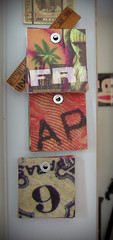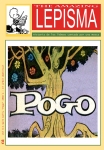
The idea that if you build it, they will come, might have worked for Kevin Costner in the movie “Field of Dreams,” but it certainly does not hold true for Web sites.
Build a bad-looking small-business site filled with poorly written text, and your potential customers will go away. Build one that is attractive, compelling and clever, but crucial design mistakes will still guarantee that few people will know that the site exists.
Your Web site is like a digital business card, designers say, the first online look at your company that a customer gets. With luck, it will not be the last.
A site must have addictive content, said Vincent Flanders, a Web design consultant in the Seattle area who is the creator of Webpagesthatsuck.com, a site that analyzes why some pages do not work. “People must be willing to crawl through a sewer for it.”
It is not just small operations that make a mishmash of their sites. Large companies can be just as prone to major design mistakes.
One global company states on its home page that “Indigenous and proven career management tools coupled with a comprehensive series of integrated initiatives have been evolved, to ensure that employees continue to sustain a high performance culture, while recruitment and selection is based on necessary competencies.”
That is “just gobbledygook,” Mr. Flanders said. “The words are not understandable by humans.”
According to Jakob Nielsen, a Web site consultant and author of the book “Prioritizing Web Usability,” it is essential that a Web page get a company’s message across quickly, because visitors are a fickle bunch. Most people do not go beyond what is in front of their faces.
Studies by Mr. Nielsen’s company, the Nielsen Norman Group, an Internet design firm in Fremont, Calif., show that only 50 percent of Web visitors scroll down the screen to see what lies below the visible part on their PC monitor.
“Users spend 30 seconds reviewing a home page,” Mr. Nielsen said. “A business must encapsulate what they do in very few words.”
With findings like those, it is no wonder that Web pages must visually hit a visitor right between the eyes. If a site does not answer a user’s questions about a business, then you have scored one for the competition. For example, the first thing customers visiting any restaurant’s Web site want to know is when it is open. But often that information can be found only by digging through multiple pages. As a result, “the site fails,” Mr. Nielsen said.
“It’s all about the basics,” said Baris Cetinok, Microsoft’s director of product management for Office Live, a site that offers free Web hosting and design tools for small businesses.
Visitors must immediately find out “who you are, what you do and how people can reach you,” Mr. Cetinok said.
Besides good grammar, Mr. Nielsen suggests that companies list a physical address, include a photograph of the building and not ask potential clients to fill out a form simply to ask a question. “That immediately communicates danger,” he said.
Making a site look good is complicated by the fact that no two monitors will necessarily present the Web in the same way. Users can set their browser’s default font size to be bigger or smaller, so it is impossible to know exactly how text will appear to any one person.
And how much of a Web site’s home page can actually be seen by users varies, based on the screen’s resolution.
The problems are made worse by designers being in Los Angeles or New York, and not, say, Texas, so “they think everyone has a large monitor and a fast D.S.L. connection,” said Neil Hettinger, co-owner of Lead Pencil Ad Design, a marketing and design company in Manhattan Beach, Calif. He suggests mixing text and graphics on a Web site, with dark type set against a light background for easy reading.
If you are selling a product, use thumbnail photos that can be enlarged when clicked on, Mr. Nielsen said, not a graphic that can be rotated in every direction. Otherwise “you see products at weird angles.”
“The most important rule in Web page design is to eliminate unnecessary design,” Mr. Flanders said. He recommends not adding large, spinning graphics that take a long time to download.
He also advises business owners not to add introductory splash pages that force a viewer to watch a video or animation.
“Splash pages are only needed for pornography, gambling and multinational Web sites that need to direct users to a particular country’s page,” Mr. Flanders said.
Graphics also do nothing to help a site get discovered by search engines like Google or Yahoo. Those sites troll the Internet for key words, as well as the frequency and quality of one site that links to another.
Text embedded in a graphic, like the name of a shop in a photograph, cannot be seen by search engines. And the old practice of embedding key words in white-on-white type will not increase a site’s page ranking; in fact it will do the opposite.
“The first time a word is used on a site, it’s significant,” said Matt Cutts, a Google software engineer. “If that word is used 50 times, there is a diminishing return.”
“If you put hidden tags on your page, you’re a total moron,” Mr. Flanders said. “You will get caught by search engines, or others will turn you in.”
If your business is local, make sure that the entire geographic area you serve is mentioned in text on the site. To increase the number of sites that link to yours, list your business in online trade directories, and mention it on various blogs.
Google offers free Web master tools that automatically analyze a site to determine if it is being optimized by search engines.
In the end, getting a prominent placement in a search engine is the only way to ensure that your site will be seen by those who can increase your business.
“If your site is not listed on the first page of search results, you might as well not exist,” Mr. Nielsen said.
Thanks to Eric A. Taub at The New York Times




























































